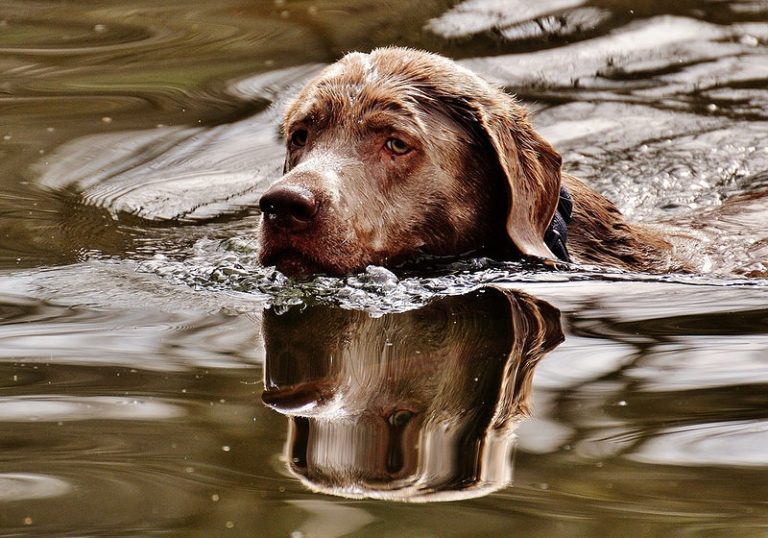Labrador Retrievers are a great family dog. They make great pets, and they’re also excellent for anyone looking for an easy-going companion. The best thing about lubbers is that you don’t have to fear losing yourithmetic, training, or sense of direction with one. There’s so much you can do with a Labrador Retriever that it would be impossible to list them all. However, there is one thing that we personal trainers are really big on: running!
Depending on a Labrador Retriever’s health, fitness level, and age, they may be able to run further or shorter distances. Five miles is a reasonable distance for a healthy and fit young Labrador Retriever. They can run a distance of up to 10 miles after gaining stamina. Hip dysplasia and other joint and muscle problems can be avoided by restricting their daily running to no more than 5-10 kilometres.

Labrador Retrievers are well known for their ability to run. Duck retrievers were originally bred to be America’s favorite dog. In addition to being excellent swimmers, they have a thick double coat to keep them warm and comfortable. They can easily float on water thanks to their extra-webbed feet. They were utilized as hunting partners in England in the 1800s.
The Labrador Retriever’s strong frame is a result of its work as a hunting dog, both in and out of the water. In addition to their remarkable agility and stamina, they are also quite fast. Labrador Retrievers have a lean and mean body structure and outstanding stamina, making it easy for their owners to imagine that their canine can run long distances.
But exactly how far can this beloved breed run?
How far can a Labrador Retriever run?
There are four main criteria that determine how far a Labrador Retriever can run. Included in this list are:
- Your dog’s physical condition
- How the weather is
- Your Labrador Retriever’s overall health
- Your dog’s age is a factor
All of these factors affect how far your Lab can go. Because of this.
The level of fitness is critical: The level of physical fitness of a Labrador retriever is the single most critical element in determining how far he can run before getting tired. He should have no problem running anywhere from 5 to 10 miles per hour of exercise if you’re reasonably active with him and give him the suggested 1 to 1 12 hours of daily exercise.
Running with the help of owner: To be sure, a house-bound dog will be unable to sprint out of the house and run for several kilometers. A canine, like a human, needs to acquire stamina. What can you do to help your Labrador Retriever gain stamina and endurance? It’s not that difficult, really. Here are a few helpful hints to keep in mind.
- Take it easy at first. Running lengthy distances with a dog should never be forced. A person’s health, bones, and joints might be seriously harmed if they rush. Always take it easy at the beginning.
- When you’re just starting out, stick to one mile every day. Just a little bit. In spite of the fact that your dog’s natural instinct will be to keep up with you, you shouldn’t put any pressure on them. For the first several weeks, only run a mile a day, then gradually increase your mileage.
- Schedule downtime. Every three to four days, take a day off from running. Again, the goal is to increase your dog’s endurance. They will be able to heal and grow stronger and more resilient if they get enough rest.
- Give him nutritious food to eat. It is recommended that you offer your pet Labrador a diet that contains 20-30% protein and 10-15% fat. When your dog is routinely running great distances, you can eat up to 20% fat in their diet. Carbohydrates should never make up more than 30% of a meal.
Labrador Retrievers’ ability to run depends on the weather.
Long-distance runners must also take the weather into account. Hot weather shouldn’t be an excuse to go running. It’s important that we keep an eye on the outside temperature, because it’s possible for your lab to overheat. Their paws can also be burned. Too low of a temperature, on the other hand, is dangerous. When it comes to a double-coated Lab, it doesn’t mean that he won’t get cold.
Running outside with your dog might be dangerous, so how can you keep them safe?
- Never go for a run while it’s extremely hot outside. Running in the early morning or late at night is an option in the summer.
- To avoid dehydration, bring a lot of water. If you’re thirsty, chances are your dog is, too. Don’t forget to bring some water for yourself and your dog along for the ride.
- Allow for plenty of rest stops. When it comes to running, a dog isn’t like a human. Allow them to take a moment to appreciate the beauty around them. As a bonus, they’ll be able to enjoy the scents around them, which is a must-have for dogs.
Running with a Labrador Retriever Puppy
It is highly recommended that you do not go running with a Labrador retriever puppy. The prevalent school of thought is that before subjecting young dogs to extended periods of activity, we should wait for them to finish developing and give their joints time to fully develop and harden.
If you want to take your new puppy on a jog someday, wait until he or she is about ten months old to start doing so gently for very short periods of time, anything from five to ten minutes at a time.
Running With An Older Dog
There are many senior dogs who would benefit from and appreciate some frequent, shorter runs. However, this is the kind of choice that needs to be taken on a case-by-case basis by each person. Do discuss your intentions with your trusted veterinarian and listen to his recommendations for keeping your aging companion healthy and content.
How running affects a Labrador Retriever’s health
Running for at least an hour at a time should be no problem for a young dog who engages in regular physical activity, maintains a healthy diet, and is in good health. This should be equivalent to approximately 5 miles, or even a little bit further. It is in your best interest to take your dog to the veterinarian so that you may determine whether or not he is in good enough health to run for extended distances. Having said that, you also need to take into account the fact that Labradors are notorious for a number of severe health problems. These health concerns include the following:
- Hip Dysplasia
- Arthritis
- Dysplasia of the Elbow
Running an excessive distance for an excessive amount of time can hasten the onset of these health concerns. Because of this, it is recommended that you limit the amount of activity your Labrador gets each day to between one and one and a half hours. This ensures that he is getting the appropriate amount of physical activity without going overboard and causing problems with his elbows, hips, and other joints in his body. Taking this into account will extend the life of a Labrador Retriever as well as improve the distance it is capable of running.
Conclusion
Adults who are physically fit and healthy Running with a Labrador is a great way to keep fit. As long as your dog is in good health, he or she can join you on a jog or a run. Running with a Labrador is a lot of fun since they like it and enjoy being with you. Throughout my adolescent years, my Labrador would accompany me on daily walks into the woods. His constant companionship and encouragement made the experience even more enjoyable for both of us.
As a breed, Labrador Retrievers are physically fit and athletic. When it comes to sporty dog breeds, Labrador Retrievers are no exception.Your Lab’s ability to run long distances is entirely dependent on their fitness level. In the same way that you have to gradually build up your stamina, your Labrador will have to do the same. They’re well-built, muscular creatures with outstanding stamina and agility.
Labradors are also known for their quickness. Make sure that you don’t overwork your Labrador Retriever as a running partner. The maximum distance a Labrador Retriever can run is highly individual. Labs should not run more than 5 to 10 miles at a time, which should take around an hour and a half for a healthy and young Lab. It’s best to start out slowly and make sure your dog is in good health before embarking on a long trip.









